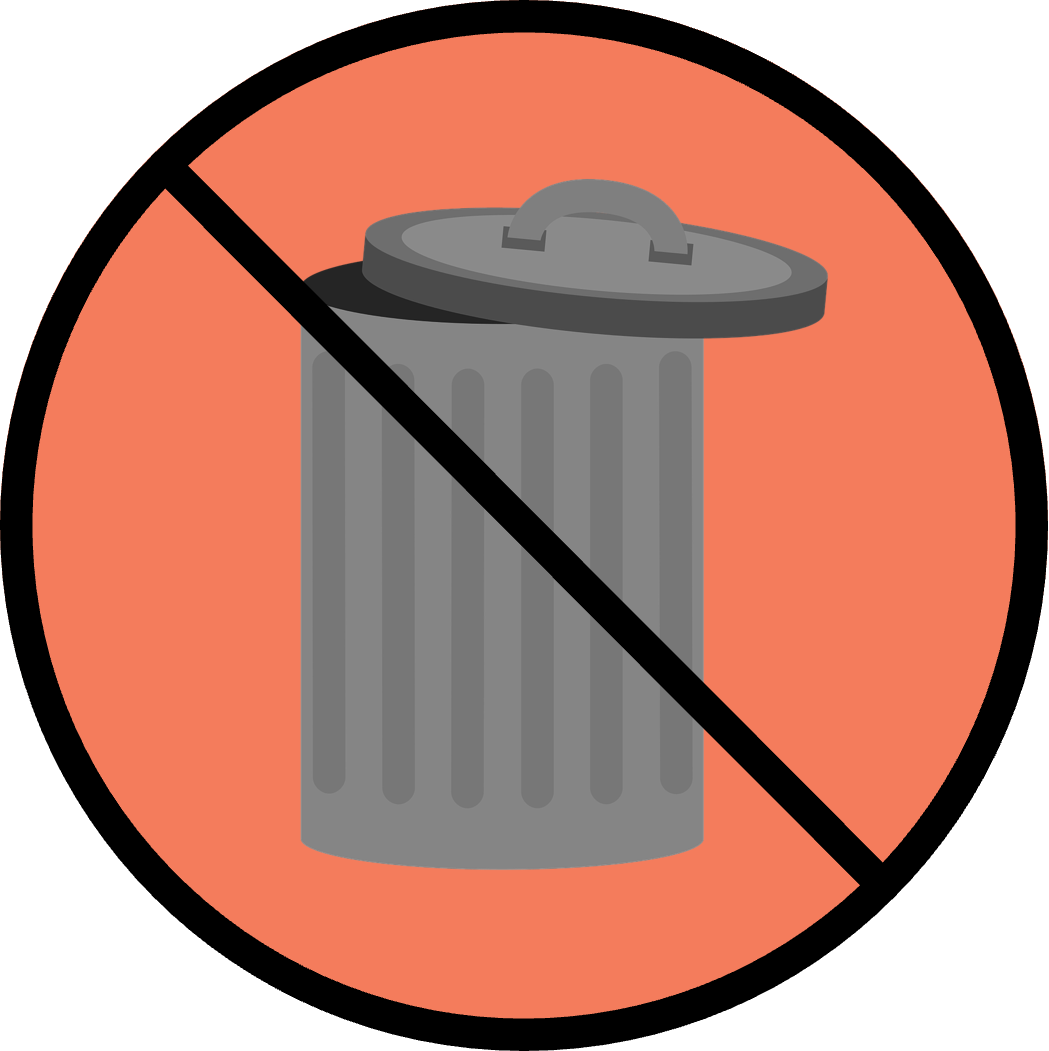DTSC Handling and Disposal of Mercury Waste Fact Sheet
Mercury Waste Home | Managing Mercury Waste Fact Sheet
Reducing the Impact of Mercury in California | AB 1415 Sales Ban Exemptions
Managing Mercury Waste Fact Sheet
What is Mercury and How is California Reducing Its Impact?
Mercury is a toxic substance and California is actively working to reduce its impact on both human and environmental health.
What is Mercury and How is California Reducing Its Impact?
Mercury is a toxic substance and California is actively working to reduce its impact on both human and environmental health.
Many mercury-containing products and equipment can be managed as universal waste under chapter 23 of title 22 of the California Code of Regulations. By designating these devices as universal waste, it allows residents and businesses to handle mercury-containing products and equipment under a set of more relaxed management standards compared to other types of hazardous waste.
Many cities and counties have developed programs to collect, recycle, and/or properly dispose of household hazardous waste, including mercury-containing household products. These household hazardous waste collection facilities may also collect hazardous waste generated by small businesses that are exempt from regular hazardous waste management requirements.
Mercury Waste Management Guidelines for Households and Businesses
Residents & Households
What should I do as a member of the general public or a household?
Businesses
What should I do as the owner or operator of a business?
What Can I Do As a Resident or Household?
Mercury-containing products such as thermometers and thermostats can release mercury into the environment if broken. To avoid this breakage, store all mercury-containing products in a way that prevents the release of mercury, and always take your mercury-containing products to a collection location, such as a household hazardous waste facility—do not throw them away with your other household trash.
Store your used mercury-containing equipment in a:
- safe, dry place
- out of the reach of children or animals
- where they cannot be broken
Due to the possibility of mercury vapor being retained in carpets, you may want to consider using, handling, and storing mercury-containing equipment only in areas with hard flooring.
What Can I Do As a Resident or Household?
Mercury-containing products such as thermometers and thermostats can release mercury into the environment if broken. To avoid this breakage, store all mercury-containing products in a way that prevents the release of mercury, and always take your mercury-containing products to a collection location, such as a household hazardous waste facility—do not throw them away with your other household trash.
Store your used mercury-containing equipment in a:
- safe, dry place
- out of the reach of children or animals
- where they cannot be broken
Due to the possibility of mercury vapor being retained in carpets, you may want to consider using, handling, and storing mercury-containing equipment only in areas with hard flooring.
Where should I take my used mercury-containing equipment?

For information on local collection programs:
- Contact your municipal waste service provider or
- Check DTSC’s Household Hazardous Waste Program webpage
You may also find the following resources useful

For information on local collection programs:
- Contact your municipal waste service provider or
- Check DTSC’s Household Hazardous Waste Program webpage
You may also find the following resources useful
What if I accidentally broke a mercury-containing product?
Common examples of these products include thermostats and thermometers that contain mercury. Materials you will need for clean-up:
- Dust mask and gloves
- Airtight container (e.g., glass container, resealable bag)
- Stiff paper such as index cards or cardboard
- Duct tape, masking tape, or packing tape
- Damp cloth
- Marker to label the airtight container
- Optional: Commercial mercury spill kit
DO NOT VACUUM. Vacuuming is not recommended since it could spread mercury-containing powder or mercury vapor.
Before Cleanup
- Young children and pregnant women should leave the area during cleanup.
- Open all doors and windows to ventilate the area for at least 15 minutes.
- Turn off your AC/fan/heater to prevent circulation of any mercury vapor.
- Collect all materials needed for the cleanup.
During Cleanup
- Wear appropriate personal protective equipment (e.g., dust mask and gloves) to keep dust and glass from being inhaled or contacting your skin.
- Carefully remove the larger pieces and place them in a secure, airtight container.
- Begin thoroughly collecting the smaller pieces and dust and put all material into the airtight container.
- Pat the area with the sticky side of duct, packing, or masking tape to pick up any remaining pieces.
- Wipe the area with a damp cloth.
- Put all waste and clean up materials in the airtight container and label it “Universal Waste – Mercury-Containing Equipment”. Avoid leaving any fragments or cleanup materials indoors.
After Cleanup
- Take the container for recycling at the household hazardous waste (HHW) facility nearest you.
- If practical, continue to air out the room where the mercury-containing device was broken and leave the heating/air conditioning system shut off for several hours.
- The next several times you vacuum, shut off the heating/air conditioning system if you have one, close the doors to other rooms, and open a window or door to the outside before vacuuming. Empty the vacuum after each use in this area.
-
If possible after vacuuming, keep the heating/air conditioning system shut off and the window or door to the outside open for several hours.
If the Mercury-Containing Equipment Breaks on Carpet
Option 1
The State of Maine’s report suggests removing the area of carpet that has been contaminated as a precaution. Although this report is guidance for handling broken fluorescent bulbs, the findings of the report can be applied to any mercury-containing devices such as thermometers.
Option 2
If option 1 is not feasible, it is recommended that you ventilate the area for several hours as well as during the process of vacuuming because vacuuming can circulate the vapor. If you vacuum, make sure to dispose of the bag along with the broken mercury equipment at your local HHW facility. You should also ventilate the room during the next few times you vacuum the area.
What Do I Do As A Business?
Businesses may handle mercury-containing products and equipment as universal waste. This allows a business the option to self-transport and the use of an invoice, bill of lading, or other document rather than a hazardous waste manifest.
Businesses handling mercury-containing products and equipment as universal waste:
- May accumulate mercury-containing products and equipment for up to one year before sending them to a recycling facility
- Required to have informal training for most employees handling spent mercury-containing products and equipment
- Must send mercury-containing products and equipment to an authorized recycling facility
- Must keep some form of documentation to demonstrate mercury-containing products and equipment were managed properly
Sales Ban on Mercury-Containing Products
Health and Safety Code sections 25214.8.2 – 25214.8.4 state that a person shall not sell, offer to sell, or distribute for promotional purposes the following mercury-containing products and equipment:
- New or refurbished mercury switches or mercury relays (either individually or as a product component)
- Mercury-added thermostats
- Thermometers
- Barometers
- Esophageal dilators, bougie tubes, or gastrointestinal tubes
- Flow meters
- Hydrometers
- Hygrometers or psychrometers
- Manometers
- Pyrometers
- Sphygmomanometers

AB 1415 Exemptions
There are certain conditions when a business can request an exemption to the sales ban implemented by AB 1415.
Handling Requirements for Universal Waste Handlers of Mercury-Containing Equipment
When handling universal waste mercury-containing products or equipment, the universal waste handler must comply with the requirements outlined in California Code of Regulations, title 22, section 66273.33(c).
Accumulation
A universal waste handler who accumulates any mercury-containing equipment received from another universal waste handler shall:
- Comply with all applicable requirements for handling hazardous materials
- Disclose in all applicable business and use permitting applications that mercury is being handled
- Comply with the location standards
- Comply with the seismic and precipitation design standards
- Accumulate mercury-containing equipment only in locations that:
- Are zoned for commercial or industrial uses;
- Are consistent with local zoning requirements and land use patterns; and
- Do not pose site-specific land-use hazards or contain sensitive habitat area, based on a review of state and local planning documents and constraints mapping.
Management
- Place any mercury-containing equipment with uncontained elemental mercury, into a closed, structurally-sound container. This must also be compatible with the contents of the mercury-containing equipment and lack evidence of leakage, spillage, or damage that could cause leakage under reasonably foreseeable conditions.
Important If the mercury containing equipment shows evidence of leakage, spillage, or damage that could cause leakage under reasonably foreseeable conditions, place the equipment into a sealed plastic bag before placing it in the sealed container.
- Determine whether the following residuals exhibit a characteristic of hazardous waste:
- Mercury or clean-up residues resulting from spills or leaks and/or
- Other wastes generated as a result of handling mercury-containing equipment.
- If the mercury, residues, and/or other wastes
- DO exhibit a characteristic of hazardous waste, the universal waste handler shall manage the wastes in compliance with all applicable requirements. The universal waste handler is considered the generator of the mercury, residues, and/or other wastes.
- DO NOT exhibit a characteristic of hazardous waste, the universal waste handler may manage the wastes in any way that complies with all applicable federal, state and local solid waste regulations.
Legislation & Regulations
CCR = California Code of Regulations
HSC = Health and Safety Code
- Standards for Universal Waste Management – California Code of Regulations, title 22, chapter 23
- Applicability – Mercury-Containing Equipment – 22 CCR § 66273.4
- Requirements for Mercury-Containing Equipment – 22 CCR § 66273.33(c)
- Mercury-Added Thermostats, Relays, Switches, and Measuring Devices – HSC §§ 25214.8.1 – 25214.8.6
For Additional Questions, Contact the Regulatory Assistance Office
Toll-Free in CA: 800-728-6942 or 800 72-TOXIC
Outside CA: 916-324-2439
Email: RAO@dtsc.ca.gov
*Disclaimer
This fact sheet does not replace or supersede relevant statutes and regulations. The information contained in this fact sheet is based upon the statutes and regulations in effect as of the date of the fact sheet. Interested parties should keep apprised of subsequent changes to relevant statutes and regulations.
Universal Waste Links
Toxics in Products Links
- Toxics in Products Home
- Cadmium in Jewelry
- Lead and Arsenic in Glass Beads
- Lead in Jewelry
- Lead in Plumbing
- Mercury Reduction in Products & Devices
- Recycling Mercury Thermostats
- Restrictions on the use of Certain Hazardous Substances (RoHS) in Electronic Devices
- Toxics in Packaging
- Toxics Reduction in Lighting
- Treated Wood Waste
Hazardous Waste Links
- Hazardous Waste Home
- Certified Appliance Recycler (CAR) Program
- CUPAs
- Defining Hazardous Waste
- Electronic Waste (E-Waste)
- Enforcement and Emergency Response Division
- Facilities (TSDFs)
- Generator Improvements Rule
- Generators
- Hazardous Waste ID Numbers
- Hazardous Waste Management Plan
- Hazardous Waste Manifests
- Hazardous Waste Tracking System
- Household Hazardous Waste
- Metal Recycling
- Metal Shredding Facilities and Wastes
- Permitting
- Toxics in Products
- Transporters
- Universal Waste
- Form 1358
- California Hazardous Waste Codes

